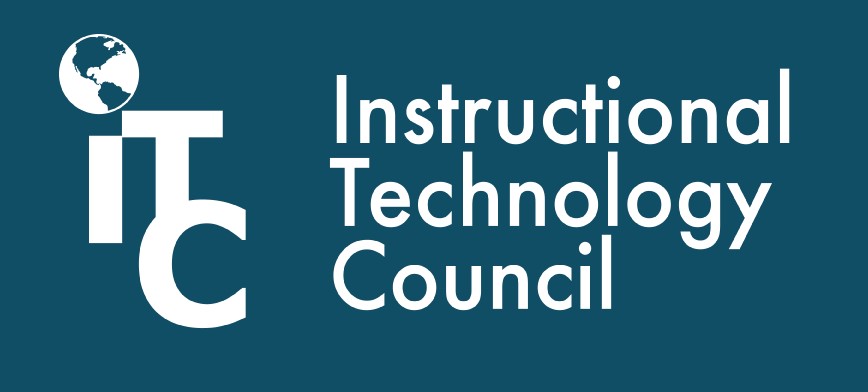
Editor’s note: The Instructional Technology Council (ITC) concludes its series of articles focusing on the anticipated impact of distance learning over the next 10 years.
For the past six months, the ITC has provided a series of articles in the CCDaily that have looked at aspects of distance learning with a special lens on its future. The articles have affirmed that distance learning:
- Played a critical role for higher education during the recent Covid-19 pandemic. Pivoting to online allowed our institutions to not only survive but to actually thrive, and it allowed our faculty and students to marshal on during very difficult times.
- Is seeing an increased interest post-pandemic in online classes and programs as a growing number of students – and faculty – now “get it” and see the numerous advantages to online learning.
- Will continue in the next several years to experience the dynamic evolution in embracing new technologies (like artificial intelligence, virtual reality and gamification) as well as more student-centered engaged learning.
- Will also play an ever-larger role in workforce development to help meet the growing need for life- long workforce re-training.
- Will allow both students and faculty the flexibility to avoid coming to campus, promoting greater mindfulness (less stress/happier and more positive learning environment).
As previous articles in the series acknowledged, the post-pandemic leadership at some community colleges has attempted to “drive” students and faculty back to in-person instruction. As a consequence of this, some colleges have established an upward limit regarding the number or percentage of online classes they offer.There are two reasons for campus leadership doing this:
- Funding at many community colleges can be based on an outdated traditional model of instruction. And, in some cases, less funding is provided for online instruction than for traditional instruction. Either of these provide a disincentive to support online enrollment growth.
- Much of the current generation of college leadership generally does not understand student and faculty interest in online learning and often perceives it as a threat to the traditional college culture.
The issue with hi-flex
The sudden interest in “hi-flex” classrooms at community colleges reflects this perception that online learning is a threat that needs to be dealt with. This approach creates hi-flex classrooms that support in-person enrollments, web-live enrollments AND fully online enrollments. BUT, the institution counts all enrollments as in-person for purposes of FTE generation in spite of national survey results that have confirmed that students who sign up for a hi-flex course at a community college rarely attend the in-person enrollment option. And to be honest, this blended modality approach is rather inconsistent with what community college students need.
There are also legitimate faculty workload issues – essentially faculty members are expected to teach simultaneously in three modalities of instruction but are normally only compensated for the number of students – no additional stipends to develop mastery in teaching this way and no additional staffing assigned to help during instruction.
Certainly, there are students who still prefer the in-person modality, and community colleges should ensure the option is supported. The risk for community colleges that try to “compel” in-person enrollments, however, could be encouraging their students to “vote with their feet” and seek out the online modality from competitors.
A bright future
In spite of efforts to suppress online student enrollments at community colleges, we must be reminded that ultimately students drive the mix of modalities that are offered. For instance, a collateral casualty of the historic growth of online enrollment has been the decline of evening classes/programs at most community colleges. The expected significant increase in retirements of current high-ranking administrators will also help to transform our dated educational culture in response to making community college courses, programs and degrees more relevant to this century than the last century.
A multitude of factors will open the community college door wider to online learning:
- Increased demand by students and faculty. Online education easily matches the quality of in-person, but is far more convenient, flexible and increasingly far more engaging. The inherent quality of asynchronous online learning–the student and faculty can be anywhere and are not expected to have any real-time interaction–also fits the changing lifestyle and quality of life concerns of the 21st Century (especially post-pandemic).
- Expansion of “free community college” programs funded at the state level. Online learning offers the most cost-effective modality to achieve this. There is no need for buildings, grass, parking, etc. – just more cloud server capacity.
- Increased competition from online providers both in-state and out-of-state (NC-SARA).
- Greatly improved broadband quality and overall access to broadband. This will open the virtual community college door even wider.
- Qualitative advancements in instruction that will more effectively appeal to current and future generations (generative AI/VR/gamification, use of video).
- The collapse of the current physical campus of the community college (lack of sustainability).
- Demands for year-round access to higher education. “You can start classes today!” will replace the archaic 19th-century agricultural calendar of most institutions.
- Greatly improved on-demand student services support for online students. This will happen by implementing generative AI-based student support solutions.
- Online learning is best positioned to support the recurring learning and career retraining needs of current and future generations of the 21st-century transformative economy (impacts of the adoption of AI, automation and robotics/future of work).
Many will likely view the next 10 years as the “golden era” of online learning, or perhaps the “a-ha era” as students, faculty, campus administrators, trustees and legislatures come to realize the infinite capacity, the outstanding teaching and learning capabilities, and the amazing flexibility/access/reach for this modality of instruction. The future of distance learning is indeed AWESOME and will be the dominant solution of higher education!





